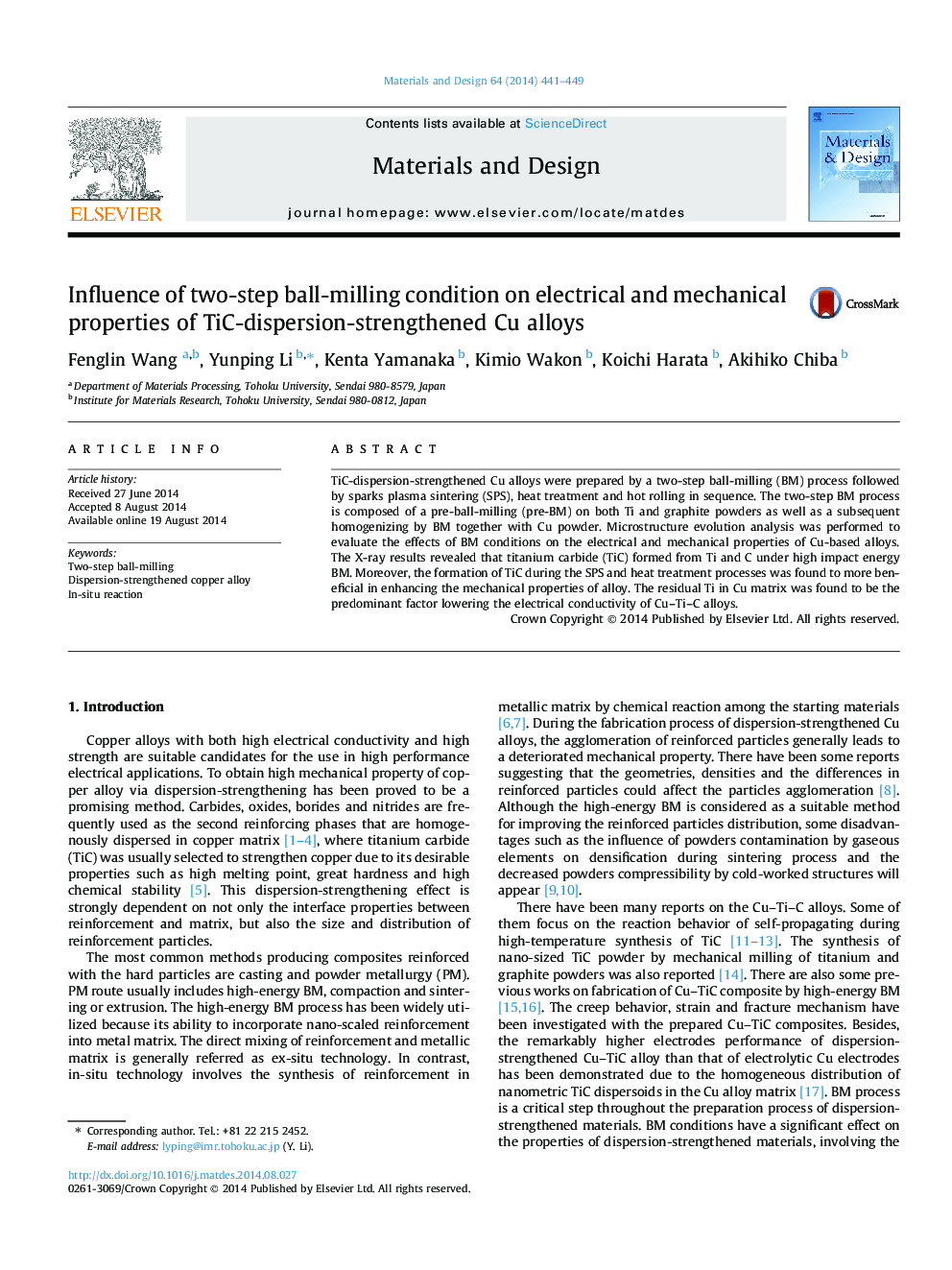| Article ID | Journal | Published Year | Pages | File Type |
|---|---|---|---|---|
| 828929 | Materials & Design (1980-2015) | 2014 | 9 Pages |
•Cu–TiC alloy was prepared by two-step ball-milling processes.•Both high electrical conductivity and high strength were obtained.•C addition decreased the amount of residual Ti in the matrix by forming TiC.•Nanocarbide and fine grains make a great contribution to the high strength.
TiC-dispersion-strengthened Cu alloys were prepared by a two-step ball-milling (BM) process followed by sparks plasma sintering (SPS), heat treatment and hot rolling in sequence. The two-step BM process is composed of a pre-ball-milling (pre-BM) on both Ti and graphite powders as well as a subsequent homogenizing by BM together with Cu powder. Microstructure evolution analysis was performed to evaluate the effects of BM conditions on the electrical and mechanical properties of Cu-based alloys. The X-ray results revealed that titanium carbide (TiC) formed from Ti and C under high impact energy BM. Moreover, the formation of TiC during the SPS and heat treatment processes was found to more beneficial in enhancing the mechanical properties of alloy. The residual Ti in Cu matrix was found to be the predominant factor lowering the electrical conductivity of Cu–Ti–C alloys.
